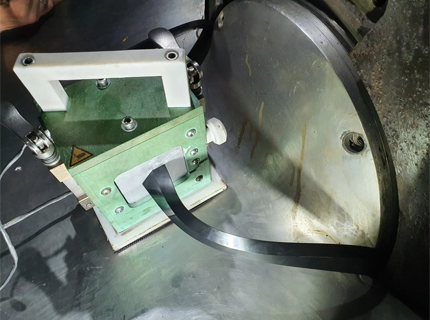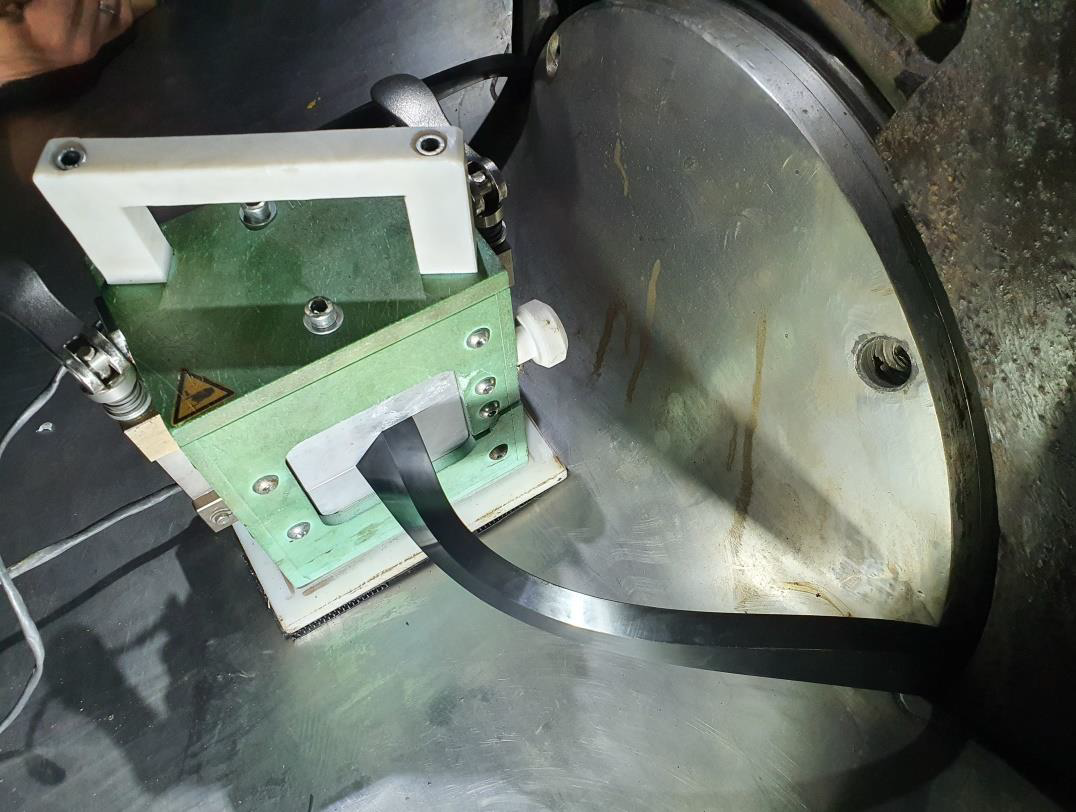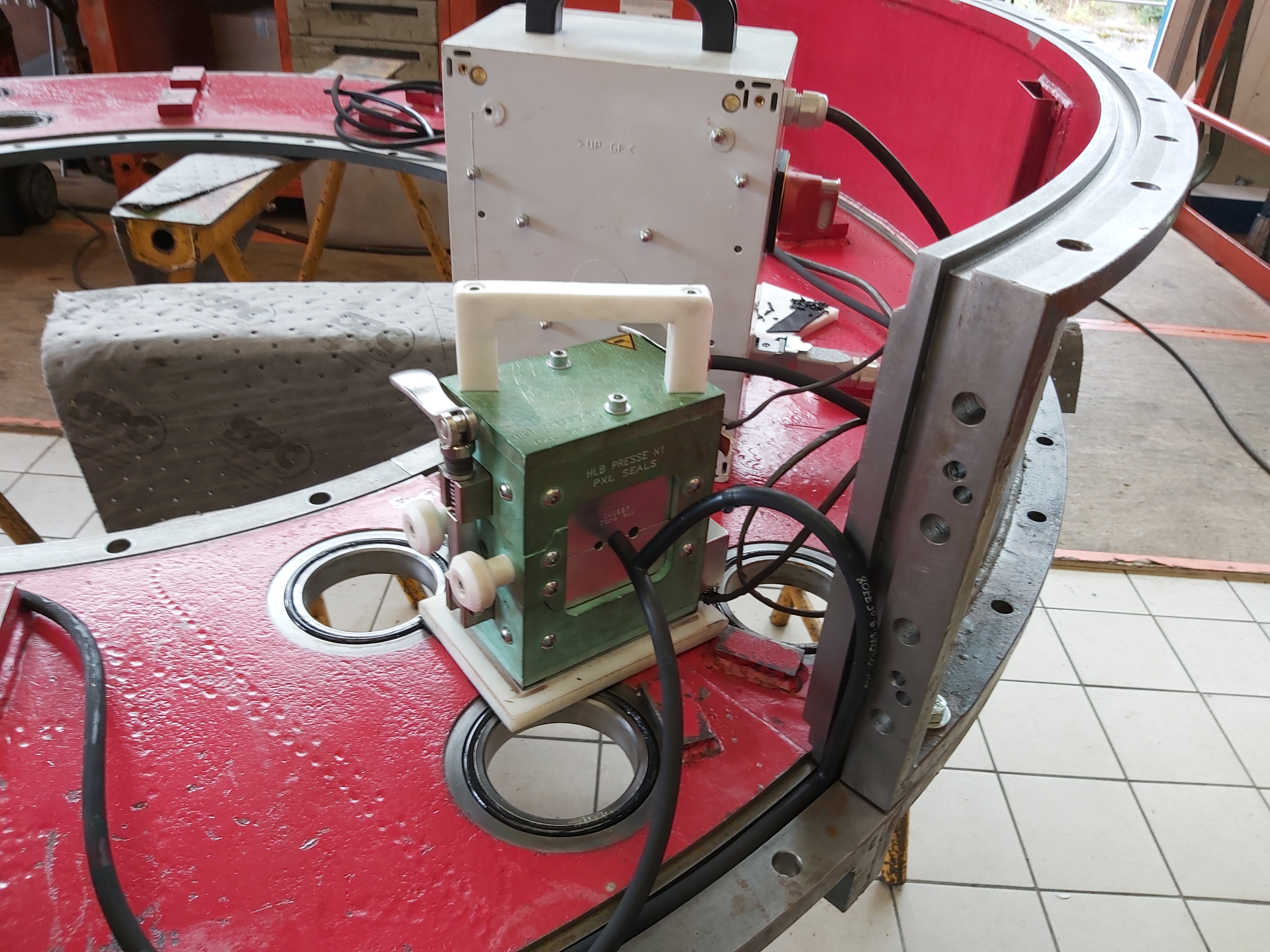ALL NEWS :
On-site seal jointing using HLB process
03/04/2024 - posté dans MD WAY

When a leak occurs in a hydropower facility, rapid intervention is crucial, as it often leads to equipment shutdowns.
PXL SEALS was among the first to implement non-stick technologies that makes it easy to replace a joint without dismantling the equipment. This reduces maintenance times, resulting in considerable savings.
The on-site team uses two processes to carry out this maintenance: the patented MD Way™ on-site moulding process and the HLB (Hot Layer Bonding) on-site jointing process.
Our customers increasingly ask for on-site jointing using the HLB process.
What is the principle behind HLB on-site bonding? What are the advantages of HLB over other jointing methods?
1. What does the HLB on-site jointing process involve?
Using the HLB process, a new seal manufactured by PXL SEALS can be fitted directly on site, with added material.
The two ends of the component are butt-jointed by adding a pellet of non-vulcanised material. By adding a layer of material close to the jointing material, the appearance and properties of the joint area obtained becomes homogeneous.
2. What are the advantages of the HLB joint?
By adding a raw elastomer, which is vulcanised directly on site, the elastic properties of the elastomer, and therefore of the joint, are maintained and there are no hard points.
The joint can be made with a portable press by the PXL SEALS team or by your teams after purchasing a portable press and being trained in its use. HLB technology is easy to use and requires no particular experience or qualifications.
All diameters of 300 mm or more can be butt-jointed with an HLB portable press. Subject to validation, the diameter can be smaller depending on the profile and the available space.
All manufactured joints, closed to a given diameter or stored in lengths, can technically be butt-jointed using the HLB process.
When is the HLB process particularly suitable?
The HLB on-site jointing process is particularly suited to equipment where there is little space to make the joint.
3. Comparison with other on-site jointing processes
To meet the needs of our customers and the particular features of each rehabilitation project, PXL SEALS recommends different types of on-site jointing processes, depending on the project: MD Way®, HLB and jointing by cold bonding.
You can find out more about the characteristics of these on-site jointing processes on this page.
The advantages of the HLB process over other bonding solutions offered by PXL SEALS are as follows:
- There is no hard spot at the joint, unlike with cold bonding;
- It is a more economical solution than the MD Way process, which is true on-site moulding;
- Even the smallest diameters can be jointed ;
- The HLB process is easier to implement than MD Way. The joints can be made by your teams after training in the use of the portable press.
4. Examples of projects
Take a look at some examples of work carried out by PXL SEALS on our customers' sites.
Work on a paddle seal

Housing seal for the intermediate bearing of a reversible Francis turbine

The HLB on-site bonding process is a high-quality, cost-effective solution for many maintenance projects that do not justify the use of a fully moulded joint without bonding.
It is an interesting alternative to on-site bonding of the elastomer joint without dismantling turbines or equipment in the hydroelectric, energy, naval and industrial sectors.
The PXL SEALS team can help you choose the process best suited to your requirements.
With the on-site moulding and bonding solutions provided by PXL SEALS, you can save time and the cost of dismantling your installations!




CATEGORIES
TAGS
ARCHIVES | Janvier | |||||
| Lun | Mar | Mer | Jeu | Ven | Sam | Dim |
| 1 | 2 | 3 | 4 | |||
| 5 | 6 | 7 | 8 | 9 | 10 | 11 |
| 12 | 13 | 14 | 15 | 16 | 17 | 18 |
| 19 | 20 | 21 | 22 | 23 | 24 | 25 |
| 26 | 27 | 28 | 29 | 30 | 31 | |










